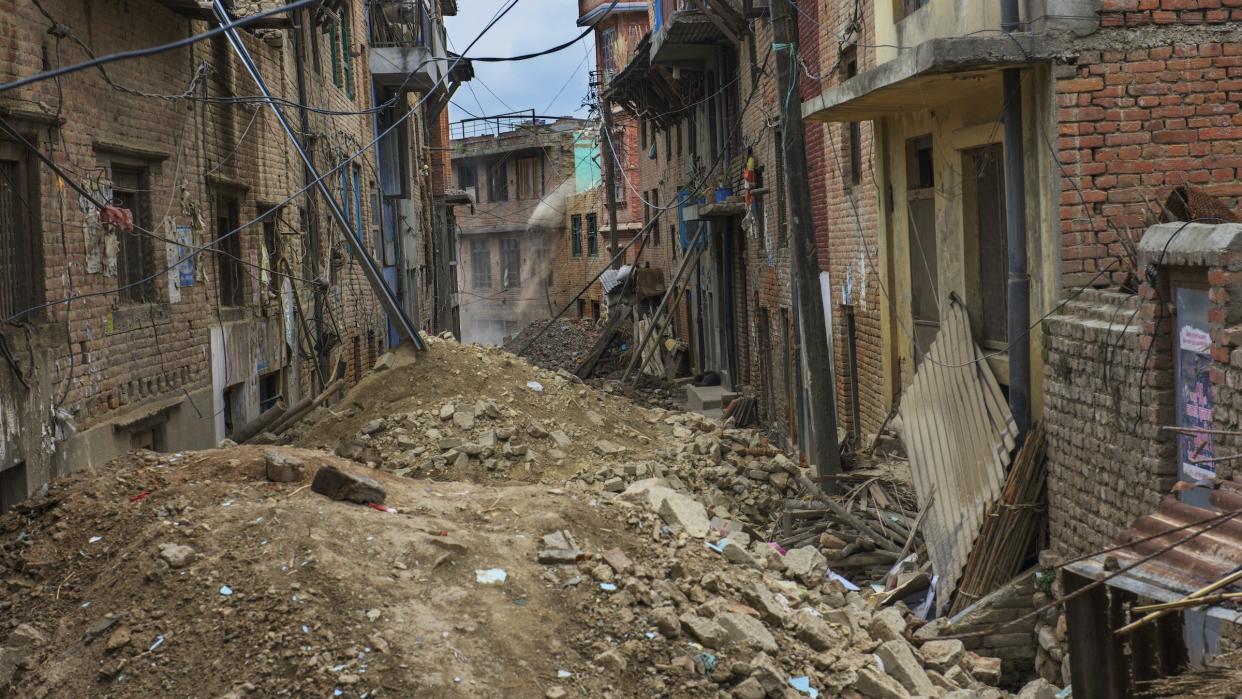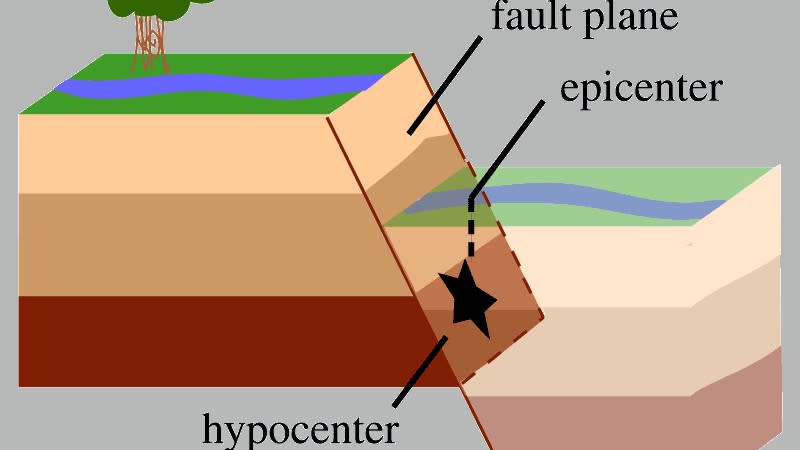How big is the largest possible earthquake?

On May 22, 1960, a devastating earthquake hit southern Chile. For 10 minutes, the ground shook so violently that people were unable to stay on their feet. Cracks opened in roads, and buildings collapsed. One man, quoted in a U.S. Geological Survey (USGS) report about surviving the quake and its subsequent tsunami, initially thought the Cold War had escalated into nuclear Armageddon.
The Valdivia earthquake, named after the town closest to its epicenter, was roughly a magnitude 9.5, the largest ever recorded before or since. But could quakes get bigger?
The answer, geoscientists say, is yes. However, the chances of a much larger quake are low. While a quake larger in magnitude than 9.5 could occur, it would require an enormous chunk of crust to break all at once — the movement of a fault both enormously deep and extraordinarily long. There aren't many places on Earth where that could happen, said Wendy Bohon, an earthquake geologist and science communicator. A 9.5 magnitude quake is probably right around the upper limit for what the planet can generate, Bohon told Live Science, and a magnitude 10 is extremely unlikely.
"It's great for Hollywood, but it's not realistic for the Earth, thank goodness," Bohon said.
Related: The 20 largest recorded earthquakes in history
Magnitude is a measurement of the amount of energy released in an earthquake. It's slightly different from how intense an earthquake feels, which can be influenced by someone's distance from the epicenter and the conditions of the ground. The same quake will feel stronger to someone standing on loose soil and sand than to someone standing on firm bedrock, Bohon said.
A quake's magnitude is dependent on the total area of a fault that breaks. This, in turn, depends on how deep the fault goes down into the crust and how long, horizontally, the segment is that breaks. There are physical limits to how big an area can break. The deepest faults are at subduction zones, where one tectonic plate pushes under another. Go deep enough, though, and the rocks are so warm that they're hot and gooey; instead of breaking, they bend. While quakes can sometimes occur as deep as 500 miles (800 kilometers) below Earth's surface, according to the USGS, most deep quakes don't generate much shaking at the surface; it's the ones in the upper few tens of kilometers of crust that are most dangerous to people.
The faults most capable of setting off large, damaging earthquakes are dipping faults in subduction zones, said Heidi Houston, an earthquake geologist at the University of Southern California. These dipping faults, so named because they're at an oblique angle rather than vertical, have the largest areas of rocks that can get stuck against one another, building up stress and then finally breaking.
"It's really the size of the dipping fault plane that is the biggest control on the maximum earthquake size, and those fault planes can get bigger in the subduction zone setting," Houston told Live Science.

But there are also limits the length of a fault segment that can break. Even subduction zone faults don't break all at once, Bohon said. Typically, something gets in the way — a seamount (an undersea mountain), perhaps, or a change in the type of rock or the geometry of rock that makes one segment of a fault more resistant to stress than its neighbor.
Another factor feeding into earthquake magnitude is how much the fault moves, or slips, Houston said. As a rule, smaller areas of breaking fault slip less than larger ones. So, while a magnitude 5 quake can slip a few centimeters — a distance not likely to break the ground above — a magnitude 9 might slip 66 feet (about 20 meters) or more. The 1960 Chile quake actually increased the area of the country because of the way the ground stretched, Sergio Barrientos, a seismologist at the University of Chile who lived through the quake, told NPR in 2016.
Related: Where are most of Earth's volcanoes?
Understanding magnitude
The earthquake magnitude scale can inadvertently obscure the difference between very large earthquakes. The scale isn't linear, but logarithmic: For every unit it goes up, the ground motion increases 10 times and the energy released goes up 32 times. Bohon likes to use the metaphor of breaking a bundle of spaghetti. If breaking one strand of spaghetti is the equivalent of a magnitude 5 earthquake, you'd have to break 32 strands to release the energy of a magnitude 6 quake. On this spaghetti scale, a magnitude 7 is like 1,024 strands breaking, a magnitude 8 is like 32,768 strands, and a magnitude 9 is like 1,048,576 strands.
As this example shows, the difference between a magnitude 8 and a magnitude 9 quake, in terms of energy released, is a lot more than the difference between a magnitude 5 and a magnitude 6. Thus, nudging up an earthquake's magnitude from 9.5 to 9.6 takes a lot bigger of an area fault breaking than going between a magnitude 5.5 and 5.6.
Due to uncertainty in the measurements, there is still scientific debate about whether the 1960 Chilean quake was exactly magnitude 9.5, Houston said. But to drive home the point about the massive differences in the size of seemingly small numbers on this end of the magnitude scale, a magnitude 9.5 quake is more than twice as strong as the next-largest quake ever recorded, a magnitude 9.2 that hit Alaska's Prince William Sound in 1964, Houston said.
Related mysteries
—What was Earth's biggest explosion?
—What's the oldest mountain range in the world? (How about the youngest?)
—Is the Yellowstone supervolcano really 'due' for an eruption?
There are, of course, planetary catastrophes that could theoretically lead to much more massive earthquakes: a collision with an asteroid, for example. (Some scientists think the end-Cretaceous asteroid impact that killed off the nonavian dinosaurs 66 million years ago triggered earthquakes with double-digit magnitudes, though pinpointing the size is tricky.) On timescales of billions of years, Earth could certainly see such a disaster, Houston said. But the chances of something larger than the mid-9s in magnitude within a human life span are very low, she said. The largest ancient quake that has been estimated based on geological evidence was also in Chile, approximately 3,800 years ago, and likely also measured about 9.5 in magnitude, according to 2022 research.
And size isn't always the most important factor in how deadly an earthquake is, at least not for humans, Bohon said. Smaller quakes have caused many, many deaths, just by virtue of hitting populated regions and areas with buildings prone to collapse. Whereas the 9.5 magnitude earthquake in Chile killed around 2,000, a quake with an estimated magnitude of 8 is thought to have killed some 830,000 people in Shaanxi, China, in 1556. In 2005, a magnitude 7.6 earthquake killed an estimated 79,000 people in Kashmir, and in 2010, a magnitude 7.0 quake killed approximately 220,000 people in Haiti. Even the 1994 Northridge earthquake, a mere magnitude 6.7 that occurred on a fault no one had even noticed before, killed 57 people, injured thousands, and caused billions of dollars' worth of damage because it impacted Los Angeles.
"So many potential faults could have damaging earthquakes," Bohon said. "But people only think about the big one."
